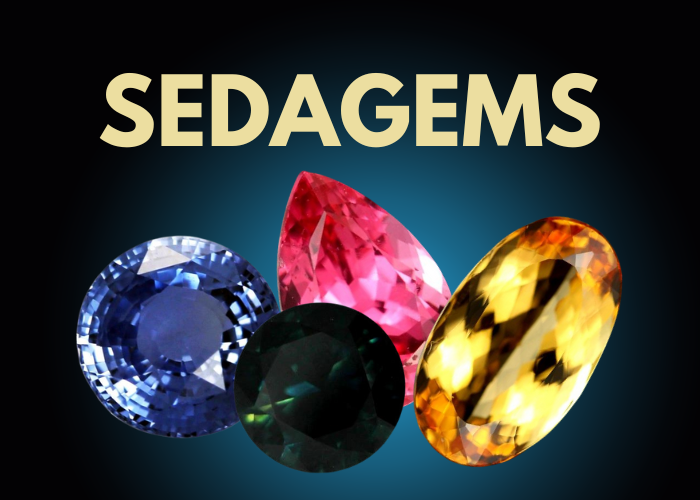FOSSIL PENDANT -ORTHOCERAS 25.50 CTS [GT 1911]
- UGS
- Dimensions (mm)
- x x mm
- Poids (cts)
- Couleurs
-
ORTHOCERAS PENDANT
Orthoceras was a ancient mollusk that lived more than 400 million years ago. The name means straight horn, referring to the characteristic long, straight, conical shell. The preserved shell is all that remains of this ancestor of our modern-day squid.pin on top-ready to wear.We have taken a photo of both sides of the pendant even though the fossil is on one side only.
Well polished
Found in Morocco

WEIGHT: 25.50 CTS APP
SIZE: 39 X 10 X 10 MM APP
The soft body lived in the last open-ended segment at the large end of the conical shell. As the body grew and the housing segment became too small, a dividing wall, called the septa, grew to separate the old “home chamber” from the new one. The differences in the composition of these shell parts allowed for differences in fossilization so the parts can be seen.
The siphuncle is a tube that runs the entire length of the shell, through each of the chambers. This tube had two functions. Once filled with water, the nautiloid could force the water out, propelling itself backward with a kind of jet propulsion. By releasing the water and leaving air space, the tube could serve as a bouyancy device allowing the animal to rise and lower itself to different depths.
These straight shelled nautiloids ranged in size from less than a centimeter to more than 14 feet long!
- UGS
- Dimensions (mm)
- x x mm
- Poids (cts)
- Couleurs
-
ORTHOCERAS PENDANT
Orthoceras was a ancient mollusk that lived more than 400 million years ago. The name means straight horn, referring to the characteristic long, straight, conical shell. The preserved shell is all that remains of this ancestor of our modern-day squid.pin on top-ready to wear.We have taken a photo of both sides of the pendant even though the fossil is on one side only.
Well polished
Found in Morocco

WEIGHT: 25.50 CTS APP
SIZE: 39 X 10 X 10 MM APP
The soft body lived in the last open-ended segment at the large end of the conical shell. As the body grew and the housing segment became too small, a dividing wall, called the septa, grew to separate the old “home chamber” from the new one. The differences in the composition of these shell parts allowed for differences in fossilization so the parts can be seen.
The siphuncle is a tube that runs the entire length of the shell, through each of the chambers. This tube had two functions. Once filled with water, the nautiloid could force the water out, propelling itself backward with a kind of jet propulsion. By releasing the water and leaving air space, the tube could serve as a bouyancy device allowing the animal to rise and lower itself to different depths.
These straight shelled nautiloids ranged in size from less than a centimeter to more than 14 feet long!
| Fournisseur d'expédition | Expédition vers Australia | Expédition dans le reste du monde |
|---|---|---|
| FedEx | $12.00 / 3 | $39.00 / 10 |
|
Australia
FedEx bénéficie d'une remise de $12.00 sur les commandes contenant 2 ou plus d'articles
Reste du monde
FedEx bénéficie d'une remise de $39.00 sur les commandes contenant 2 ou plus d'articles
|
||
| Registered Shipping | $9.00 / 7 | $16.00 / 21 |
|
Australia
Registered Shipping bénéficie d'une remise de $9.00 sur les commandes contenant 2 ou plus d'articles
Reste du monde
Registered Shipping bénéficie d'une remise de $16.00 sur les commandes contenant 2 ou plus d'articles
|
||

-
 Positif
PositifGood stone great service
-
 Positif
PositifGreat thank very much, lovely pearls.
-
 Positif
PositifNice piece of rough. thankyou
-
 Positif
PositifNice stone. Thankyou
-
 Positif
PositifHave received the rough. Nice colour. Thankyou




![2.95 CTS AUSTRALIAN ROUGH SAPPHIRE [SAP547]](https://liveplatforms-production.b-cdn.net/tenants/gr/uploads/images/685000-689999/689106/599d2324a1992.jpg?width=480&aspect_ratio=1001%3A1000)
![AAA GRADE ROUND PEARL PARCEL HIGH LUSTER- 7 MM [PF2206]](https://liveplatforms-production.b-cdn.net/tenants/gr/uploads/images/245000-249999/245364/245364_1319605247.jpg?width=480&aspect_ratio=1001%3A1000)


![3.10 CTS MINT GREEN GLOSSULAR GARNET ROUGH [F5077]](https://liveplatforms-production.b-cdn.net/tenants/gr/uploads/images/415000-419999/419109/536873d918eb0.JPG?width=480&aspect_ratio=1001%3A1000)





